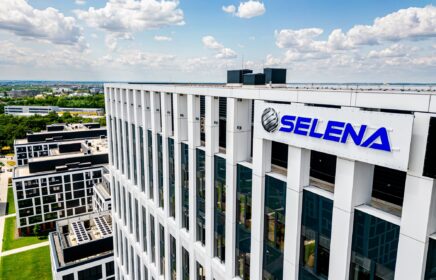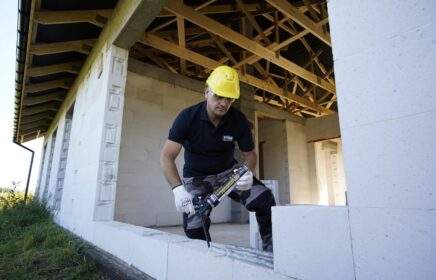Comment by Ewa Kosmala, PhD – Global Sustainability Director at Selena Group
Environmental, social, and corporate governance (ESG) has a significant impact on how business is done – and it keeps gaining in prominence. ESG aspects also play an important role in the construction sector. According to data from the International Energy Agency, buildings are responsible for 40% global (direct and indirect) CO2 emissions. That’s why reduction of carbon emissions in construction is so important.
The entire construction industry, and therefore also the manufacturers of construction products, faces two challenges: to decarbonize itself as a business, and to decarbonize its products. This begs the question whether we are able to make a truly zero-carbon building. Today – not yet, at least not in all aspects. But bringing products with a reduced carbon footprint to the construction market is not only an introduction to the innovation industry, but also an absolute necessity if we are talking about real commitment to decarbonization. We should remember there is a building at the end of the construction industry chain.
So far, we have only talked about the operational carbon footprint, which includes heating, cooling, home furnishings, etc. But no one made it clear that in order to actually decarbonize construction, we need to talk about the total carbon footprint, and therefore also the embodied carbon footprint. In order to calculate the embodied carbon footprint and, above all – to reduce it – we need construction products with a reduced carbon footprint that specifically lower that embodied carbon footprint of a building. The way to achieve this goal is to focus on zero carbon products or embodied carbon buildings. That’s why construction has a huge role in this regard.
For this reason, we should positively approach the Corporate Sustainability Reporting Directive (CSRD), because on the one hand it brings together the regulations in this area, and on the other it becomes a motivator for real action. Ewa Kosmala emphasized that small and medium-sized enterprises should not be afraid of the directive. Any negative opinions about ESG and the CSRD, actually result from misunderstanding. What we are taking part in now is a business paradigm shift. It’s just that the SME sector should move away from thinking that it is too small to do something about that fact. It’s better to adopt the approach that we are in a supply chain with larger partners who will not leave their supplier unattended. Their support is a logical thing to do in responsible business. No manufacturer will be happy to leave its trusted supplier, one of the reasons being that switching the production line to a new partner would be too costly and unprofitable. Understandably, on the assumption that both parties share a partnership approach and trust. The CSRD directive finally marks the beginning of teamwork in business and work in the chain. It’s about moving together to a different business model than from the position of strength of a large company.
A lot of concern and misunderstanding comes from the lack of awareness and knowledge about the indicators, impact and scope of sustainable development. For this reason, it should be remembered that education is key to ESG and CSRD. You need to get down to the very bottom of the organization so that each and every employee can learn and understand why the company operates the way it does, how it wants to position itself and what it wishes to communicate to the market. At Selena, we’ve explained this using our IFEEC strategy – part of Selena Group’s business strategy. It includes sustainable construction (area name: Investors), responsible leadership (Finance), social well-being (Employees), workplace ergonomics (End Users), and environmental footprint reduction (Climate).
Why is this so important? A study conducted by the IBM Institute For Business Value shows that 55% of CEOs from 30 countries have salaries linked to sustainability KPIs – compared to a mere 15% in 2022. This shows how big a role ESG should play in the organization, since the management board’s bonus depends on it.
ESG really brings harmony to the business. Having the strategy first, with reporting coming at the end, is a highly valuable approach. If the order is reversed, the intended effect won’t be achieved. When preparing for a strategy, you need to collect accurate baseline data and identify existing problems.
By way of analogy: at zero state – when it is measured and interpreted – the company is like a sieve: we have a lot of holes that we are only starting to seal. And it is through the process of sealing those holes that we suddenly come to see the economic sense of our activities. That said, ESG is not a cost, but a booster of the company’s profitability.




